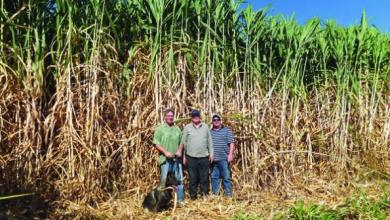
In the Arizona desert, the first U.S. commercial plantings of Giant King Grass are being established – for use as livestock feed first, and hopefully as a renewable energy feedstock in the future. That's according to Carl Kukkonen, CEO of Viaspace, which owns the rights to Giant King Grass.
The perennial hybrid, from the same family as elephant grass, can grow to 20', has a crude protein level of around 14-15.6% and can be harvested five times per year. One cutting taken for bioenergy use can yield 22-24 tons dry matter/acre, and stands last up to seven years before declining in yield.
Under an agreement with Viaspace, Syn Tawa Energy, the developer of Maricopa Bio Crops, has planted 5 acres of Giant King Grass near a renewable energy refinery it's also developing. Called Maricopa Bio-Fuels, the Phoenix-area refinery will process cellulosic biomass into premium diesel fuel.
Giant King Grass may be used as a "backup" feedstock when supplies of Maricopa's primary feedstock, green waste taken from nearby municipal landfills, runs low, says Patrick Sweeney, CEO of Syn Tawa and the Maricopa projects.
The refinery, to be operational in about two years, will likely produce 11.1 million gallons per year of diesel fuel at less than half the cost of comparable petroleum diesel fuel, notes Sweeney. If Giant King Grass were the primary feedstock, he estimates that 7,000-7,500 acres of the crop would be needed to meet the refinery's annual demand.
"The goal for planting Giant King Grass is twofold," explains Sweeney. It should prove that the crop can be grown in Arizona and sold as livestock feed, as well as serve as the refinery's backup feedstock.
Within the next year, Syn Tawa anticipates expanding Giant King Grass to 4,500 acres. Eventually, plantings could cover 15,000 acres, and the company may contract with Arizona-based Native American tribes to grow the grass on their reservations.
Its primary market will be local area beef and dairy cattle, Sweeney says. "Giant King Grass is a higher-quality protein, and it is a good nutritional forage compared to what ranchers are using now. We are working on long-term contracts now with some of the largest cattle feedlots and dairies in the state."
When harvested at 60 days old and 5' tall, Kukkonen says, the grass can yield 25-40 wet tons/acre/cutting. He estimates five or six harvests per year.
As acreage expands, the grass could be baled and sold as livestock feed to markets in California and New Mexico as well as overseas, notes Sweeney. It could also be baled and double-compressed or pelletized to ship to the Pacific Rim for beef cattle and dairy feed.





